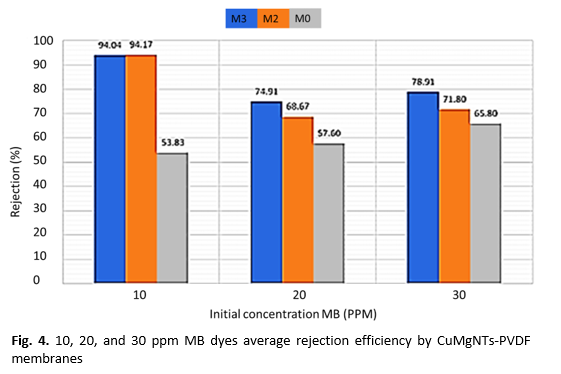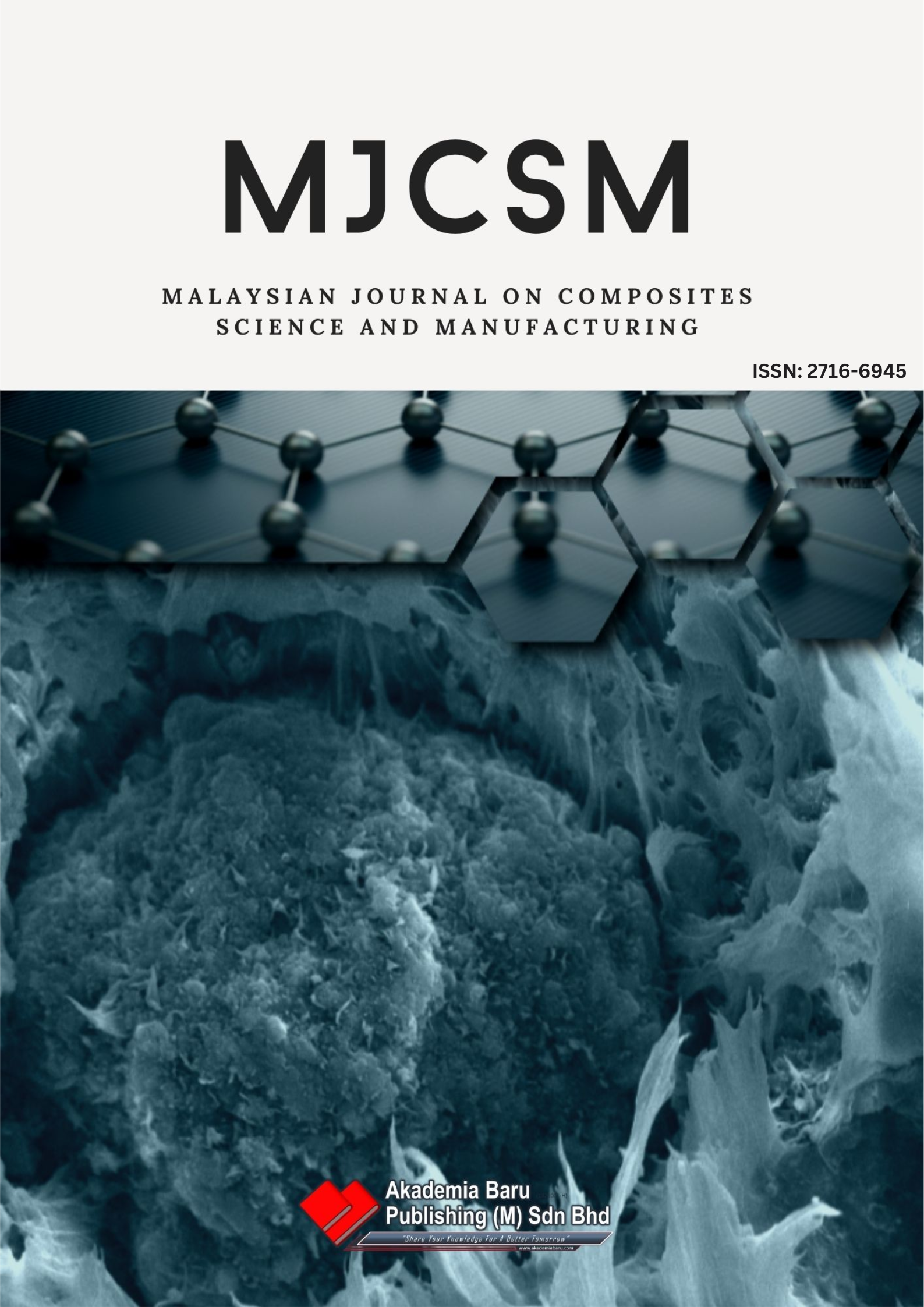Relationship of Additive Dosages to Polyvinylidene Fluoride (PVDF) Ultrafiltration: Dye Rejection Study
DOI:
https://doi.org/10.37934/mjcsm.16.1.201211Keywords:
PVDF, ultrafiltration, dye rejection, membrane, copper, magnesiumAbstract
Ultrafiltration membrane is often used in wastewater treatment plants to remove dyes and other contaminations. This study aims to improve the properties and methylene blue rejection efficiency of the polyvinylidene fluoride (PVDF) ultrafiltration (UF) membranes by introducing copper acetate monohydrate/magnesium sulphate (CuMgNTs) at different loading dosages. The flat sheet membranes were successfully fabricated using the phase inversion method. The physicochemical properties of membranes were characterized by scanning electron microscopy (SEM), energy-dispersive X-ray (EDX) and Fourier transform infrared spectroscopy (FT-IR). The pure water flux tests showed that the M3 membrane with 3wt.% of CuMgNTs loading exhibits the highest pure water flux of 47 L/m2h. For methylene blue rejection efficiency M3 membrane possessed the highest rejection efficiency up to 94%. The M3 membrane performance showed an increase in pure water flux and methylene blue dye rejection up to 224% and 74%, respectively, compared to pristine PVDF membrane. Therefore, it can conclude that 3wt.% of CuMgNTs is the optimum loading for PVDF UF membrane in improving its permeability towards pure water and performance to reject methylene blue dyes.Downloads












